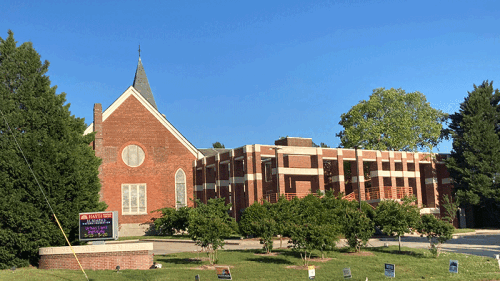The Leadership in Energy and Environmental Design (LEED) rating system, devised by the U.S. Green Building Council (USGBC), is the world’s most popular green building brand. But challenges and alternatives to LEED are increasingly appearing, exposing some of the rating system’s limitations.
How far this backlash grows could have implications for all of commercial real estate. In fact, the Urban Land Institute’s Sustainable Development Council plans a program on challenges and alternatives to LEED during the ULI Spring Meeting in May.
Recent movements against LEED are taking two main forms, primarily in the public sector: governments limiting its application as a policy benchmark and pursuing green building standards other than LEED.
In terms of green policy, the U.S. Congress passed and President Obama signed a bill in December that severely restricts the U.S. Department of Defense (DoD) from spending extra money on new or renovated facilities to attain LEED’s highest rating levels—Gold and Platinum certification. This was a surprising development considering the federal government has been one of the first and primary champions of LEED since its inception in 2000.
In terms of LEED alternatives, a growing number of state and local governments are adopting different green building standards that aren’t tied to LEED, such as California’s statewide CalGreen building code that took effect last year. In addition, several other rating systems are cropping up and gaining momentum, such as the Green Building Initiative’s Green Globes, which is touted as a simpler and less expensive rating system.
“While this may be painful for the USGBC, it’s great for the green building world because we’re figuring out what tools work and where LEED fits into green policy,” says Chris Cheatham, a green building construction attorney in Kansas City, Missouri, who writes the Green Building Law Update blog.
Judi Schweitzer, a sustainability consultant in California, an advisory member of California’s Building Standards Commission that developed CalGreen, and a vice chair of ULI’s Sustainable Development Council, adds: “I do think there will be repercussions in the commercial building industry. The standard that everyone’s been using has been called into question. If I was managing a project that was planning LEED Gold or Platinum, I’d be thinking twice about it.”
At this point, though, it’s unclear whether the challenges to LEED represent mere hurdles in LEED’s own continued growth, or some larger trend that will ultimately undermine LEED’s image.
“The LEED brand is here to stay,” says Stuart Kaplow, a Baltimore-based real estate attorney who chairs the Maryland chapter of the U.S. Green Building Council. “Those who suggest there will be a significant reduction in market share for LEED are wrong, missing that green building is so fast-growing that such [reduction] would be akin to... commanding the tides of the sea to go back.”
For sure, LEED remains the standard bearer when it comes to green building recognition and performance. The number of LEED-certified U.S. commercial buildings—based on design criteria for energy efficiency, water conservation, and air quality, among other things—has surpassed the 10,000 mark, which dwarfs the number of commercial buildings certified under any other rating system. And the cumulative square footage of LEED-certified commercial space nearly tripled between 2008 and 2011 alone, according to the GreenBiz Group research firm.
Still, a national debate about LEED could be on the horizon.
The DoD’s new reauthorization bill only allows pursuit of LEED Gold or Platinum green construction if the Secretary of Defense requests a waiver for a project because LEED certification imposes no additional costs. The bill still allows for defense facility construction to attain the LEED Silver designation—which already is a DoD-wide goal—but some federal agencies such as the Navy have mandated building to the Gold standard.
It appears that Congress’s action primarily stemmed from a dispute over the use of wood in green construction. A coalition of green building advocates, timber interests, and dozens of congressional members have objected to what they believe is an exclusion of domestic sources of wood in the LEED point system. Defense construction should follow “credible standards that more accurately assess U.S. wood products,” Senator Roger Wicker, a Mississippi Republican, told the Federal Times.
Bryan Howard, the USGBC’s legislative director, called the Defense bill provision “irrational and misguided at best” on the Council’s blog. But it could mark just the beginning of Congress’s scrutiny of green building standards. The bill also requires the DoD to prepare by the end of June a cost-benefit and return-on-investment analysis of the military’s energy efficiency building standards.
“Look out for a debate in the middle of the year over whether LEED or [the American Society of Heating, Refrigerating, and Air-Conditioning Engineers’ 90.1-2010 energy code] should be scrapped from DoD and potentially other agency requirements,” New Jersey–based attorney Shari Shapiro wrote earlier this month on her Green Building Law blog.
Meanwhile, because LEED certification can add thousands of dollars to a building’s cost, alternative programs are emerging that attempt to cover green buildings more broadly or fill in LEED’s gaps.
There are different rating systems such as Green Globes and Build It Green’s GreenPoint aimed at smaller businesses and homes. Plus, there are new niche rating systems, such as the Living Building Challenge geared toward zero-utility-energy buildings and the American Architectural Manufacturers Association’s development of a green certification for windows and doors.
In addition, some governments are adopting building codes that apply green standards outside of the LEED blueprint. CalGreen represented the first statewide green building code, and it eschews outside (third-party) evaluations like LEED’s. And in March, Maryland will become the first state to fully adopt the International Green Construction Code as a local baseline option for new construction.
Overall, then, LEED remains the dominant force in green building standards, but it increasingly faces challenges and competition.
“I’m hearing two things from people in commercial building,” says Andrew Gowder, Jr., a land use attorney in Charleston, South Carolina, and assistant chairman of ULI’s Sustainable Development Council. “One is, LEED continues to have a very strong brand appeal, and there’s a feeling it’s necessary to some extent to market a building.
“On the other side, others—particularly on the public or institutional side—are looking at the cost of the [LEED] process, and they’re trying to emulate those standards without going through the certification process. . . . So some people may look at more alternatives, but I don’t see a great migration away from LEED.”
ULI Washington is presenting a four-part series on sustainability: ULI Sustainability 101: Beyond LEED with the Experts (A Four-Part Series), March 14, 2001-June 21, 2012.




